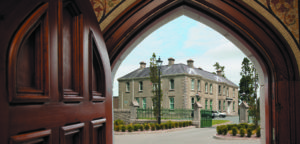KAIROS STUDIOS, MAYNOOTH, CO KILDARE
ADDRESS BY
CARDINAL SEÁN BRADY
MONDAY 22 SEPTEMBER 2008
Good morning everyone, you are all very welcome to the launch of “Catholic Bishops dot I E” – the new website for the Irish Catholic Bishops’ Conference.
The Irish Bishops’ Conference did have an internet presence since 2001 but our new website has been completely redesigned and updated. Its content has been expanded and it now hosts a number of new features which, I hope, will be of benefit to its users.
Let me give you a brief overview of our new site and then, in conclusion, say a few words from the perspective of the Catholic Church on the importance and responsibility of the internet as a means of communication.
The purpose of “Catholic Bishops’ dot I E’ is to inform as wide an audience as possible of the online extent of the pastoral outreach of the Catholic Church in Ireland.
Our site provides detailed information on the 26 diocese on this island. Positioned clearly on the home page there is a list of links introducing the people and organisations that make up the agencies and commissions of the Irish Bishops’ Conference. The homepage also provides a link to the Vatican website.
Two interesting features of our new site deserve particular mention.
• The first is the link to the daily Mass readings, and the other
• Is the development of an interactive diocesan map.
This is the first time that an electronic map of the dioceses of Ireland has been made available online.
Catholic Bishops dot I E also hosts podcasts and webcasts, including interviews with bishops. One feature which will, no doubt, prove to be very popular is the 1979 live recordings of the homilies delivered by the late Pope John Paul II during his pilgrimage to Ireland.
Major publications by the Bishops’ Conference are also available online in English and Irish and, since 2006, in Polish as well. Subscription details for Intercom, our pastoral and liturgical resource magazine, are also provided. The press release archive dates back to 2001.
Our new site should be of special interest to members of the clergy, religious, laity, teachers, policy makers, journalists, in fact, to anyone wishing to find out more about the activities of the Catholic Church at home and throughout the world.
The design and content of the site will change over time so as to retain its relevance to those who use it.
Of course “Catholic Bishops dot I E” is only one of many millions of websites now available on the internet. Clearly the net is the single most revolutionary communications medium of modern times. Its extent is incomparable. Its volume and ease of access combine to make it an awesome tool of communication. With its infinite length and breadth however comes a unique responsibility for the whole online global community.
The positive and negative aspects of the internet are two sides of the same coin: Used constructively, its potential contribution to the common good is limitless. However, its cynical use, as a vehicle for exploitation, especially of children, and to advance aggression generally, also makes the internet a potentially hostile place. Each and every one of us has a responsibility to prevent this form of abuse and, thankfully, international progress is being made in this regard.
For the Church, the internet offers us great scope for proclaiming the Good News. In 2002 the Pontifical Council for Social Communications published The Church and Internet which outlined the benefits of the net for promoting the Good News. It usefully suggested that:
“The Internet is relevant to many activities and programmes of the Church – evangelisation, including both re-evangelisation and new evanglisation, and the traditional missionary work ad gentes, catechetics and other kinds of education, news and information, apologetics, governance and administration and some forms of pastoral counselling and spiritual direction.”
The publication continues: “Although the virtual reality of cyberspace cannot substitute for real interpersonal community, the incarnational reality of the sacraments and the liturgy or the immediate and direct proclamation of the Gospel, it can complement them. It will enable people to a fuller experience of the life of faith and it will enrich the religious lives of users. It also provides the Church with a means for communicating with particular groups – young people and young adults, the elderly and home-bound, persons living in remote areas, the members of other religious bodies – who otherwise may be difficult to reach.”
It is my hope that our website fulfils such objectives and adequately serves your informational needs. I wish to conclude by mentioning the 2002 World Communications Day message, dedicated to the theme of the internet. In it, the late Pope John Paul II reminded us that:
“The internet causes billions of images to appear on millions of computer monitors around the planet. From this galaxy of sight and sound will the face of Christ emerge? Will the voice of Christ be heard? For it is only when His face is seen, and His voice is heard, that the world will know the glad tidings of our redemption. This is the purpose of evangelisation. This is what will make the internet a genuinely human space, for if there is no room for Christ, there is no room for man.”
Go raibh maith agat as ucht eisteacht agus beannacht Dé ort
END



You must be logged in to post a comment.